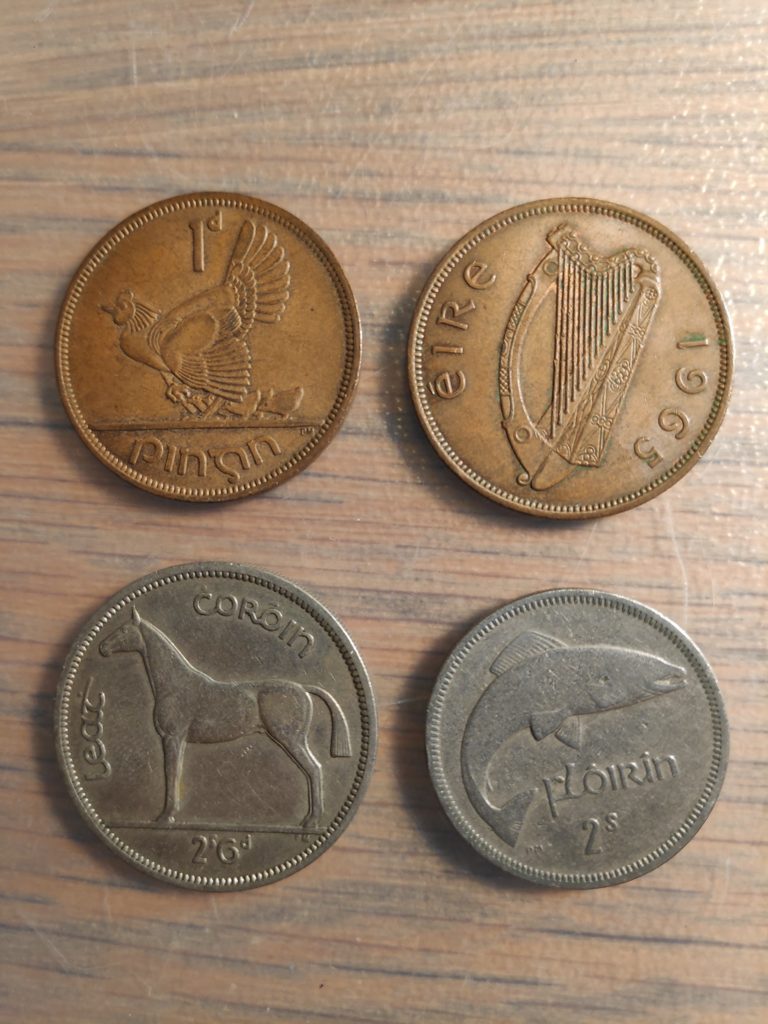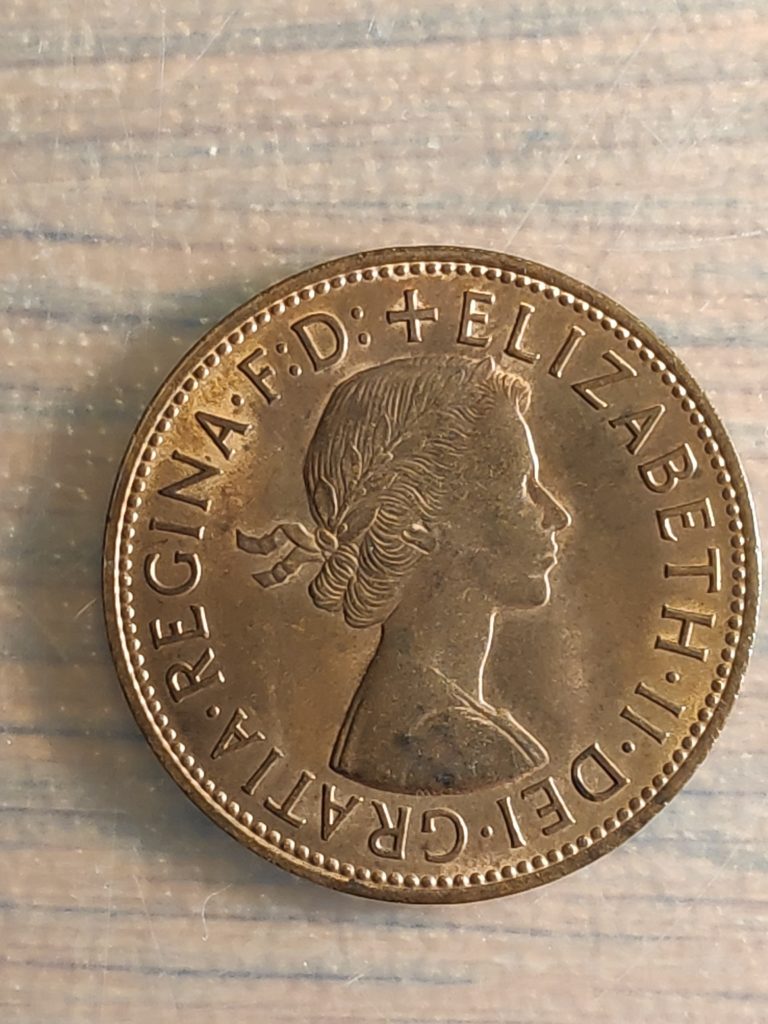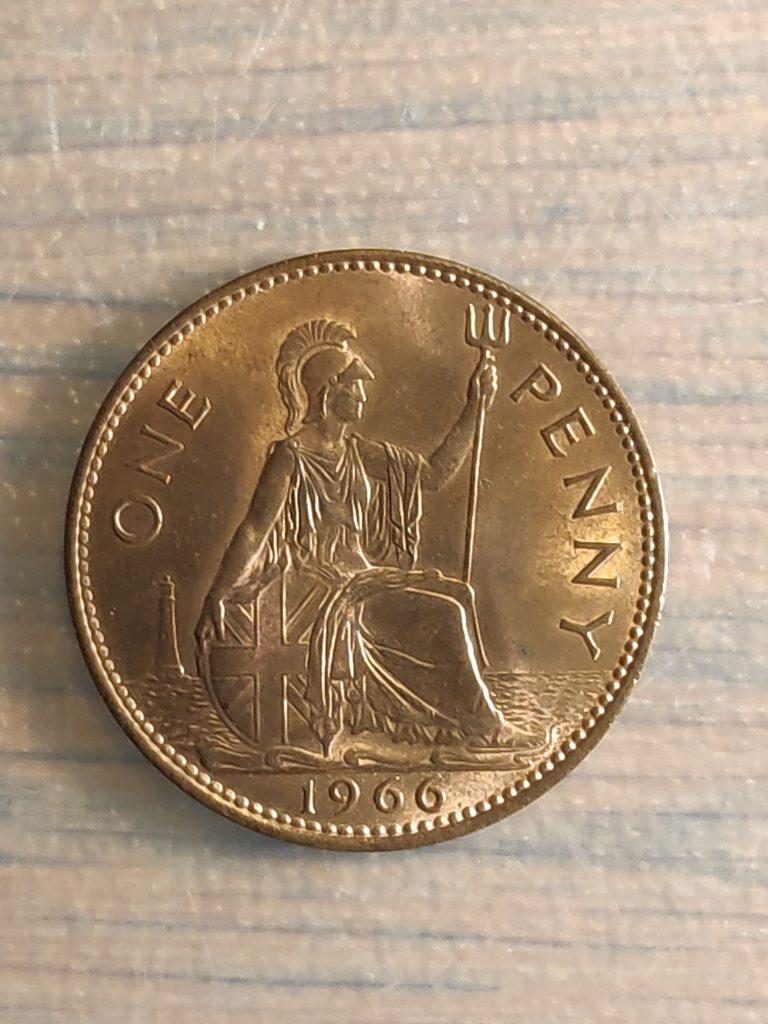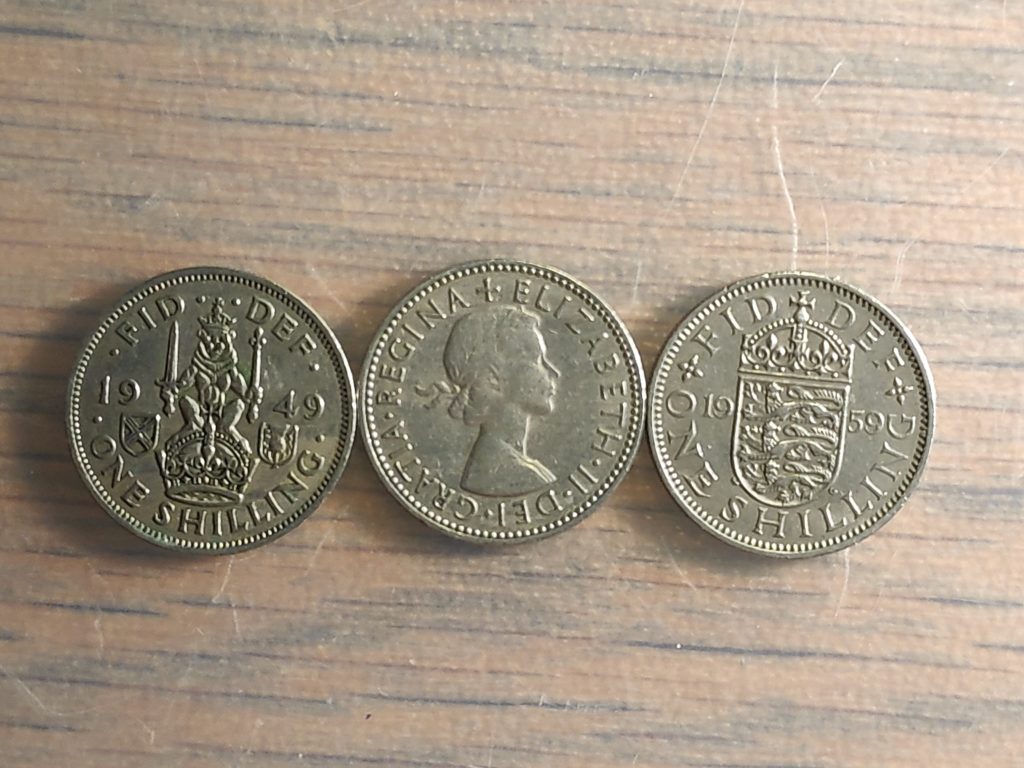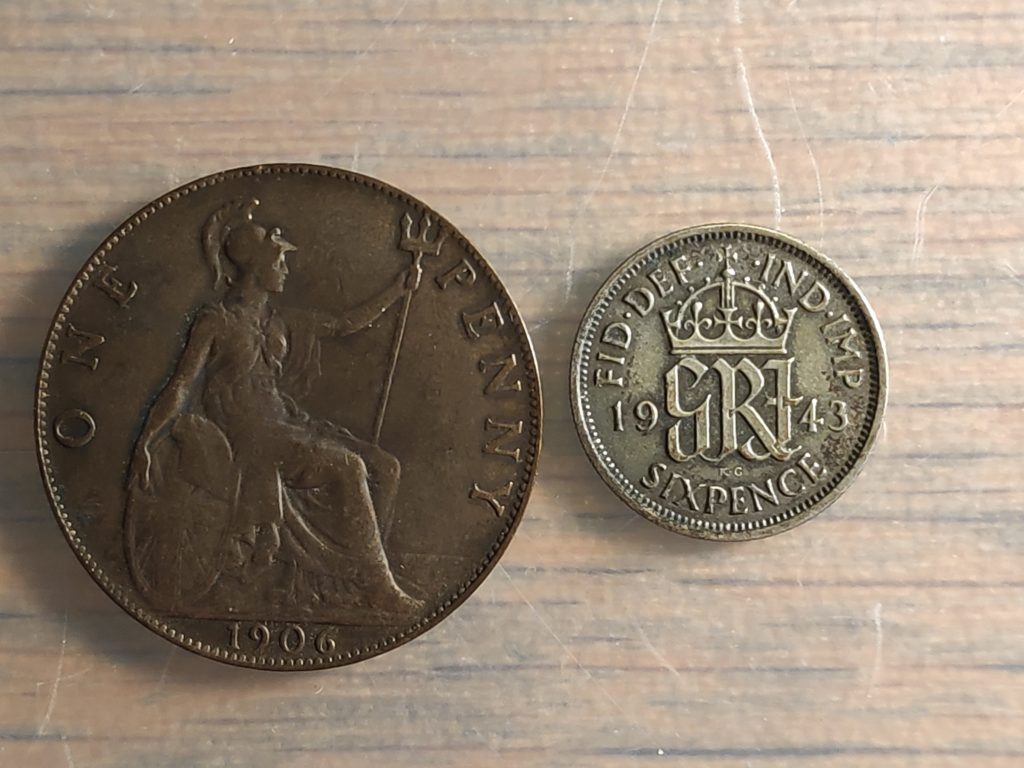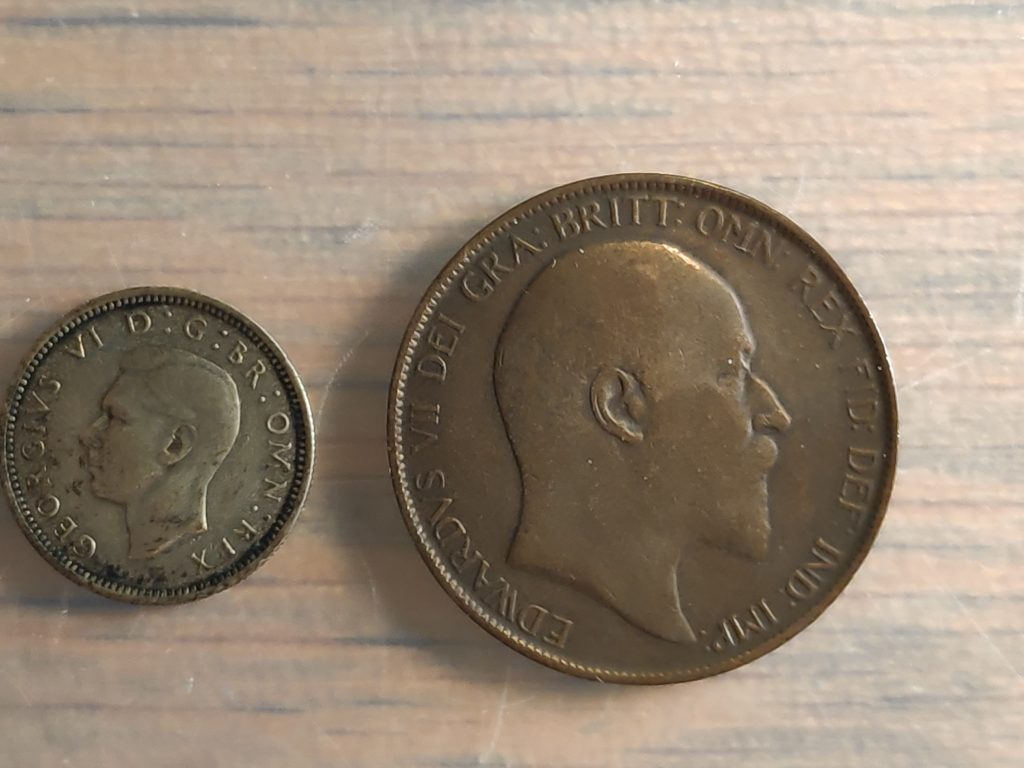Before 1971, the United Kingdom used a non-decimal currency system. In essence there were 12 pennies to a shilling and 20 shillings to the pound. A price in a store could be £1 5s 4d. But in addition to these unusual (for me) quantities, with difficult addition and subtraction, there was also the challenge of figuring out what each coin was worth. The Republic of Ireland also used a similar system of pounds, shillings and pence, but issued their own coins and banknotes.
My source for the following information in this blog is: https://www.retrowow.co.uk/retro_britain/old_money/old_money.html
In 1966, the following 7 coins would have been in common use:
- halfpenny (1/2d), pronounced “herpni”
- penny (1d)
- threepence (3d), pronounced “thruppence”
- sixpence (6d)
- shilling (1s)
- two shillings (2s)
- half crown (2s 6d)
In addition there would be banknotes:
- 10 shillings (10s)
- one pound (£1)
- five pounds (£5)
- ten pounds (£10)
For someone unused to travelling, these new coins and banknotes were confusing. I had learned about the British money system in school, but dealing with it on a daily basis, for example, finding the right coins to pay for something was completely different.
The following pictures are coins that I actually have. You won’t see the size of them, except in the picture with the penny, which is very large, in comparison to the sixpence.
